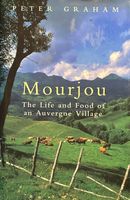Advertisement
Aligot
By Peter Graham
Published 1999
Driving through the Aveyron or the Cantal you may see a poster in a shop or café window advertising a mysterious event called an ‘aligot géanf. I say event, because although aligot is a dish (of mashed potato with cheese), and aligot géant a mammoth version of it, what is in fact being advertised is a rollicking dinner and dance. Such dances are as good an opportunity as any to get acquainted with this most spectacular of dishes.
The last time it was served in géant form in Mourjou was in October 1997, when, as usual, it rounded off proceedings at our annual Foire de la Châtaigne (chestnut festival). We all packed into a marquee erected next to the village school and sat down at long trestle tables. The temperature outside was well below freezing, and there was no heating in the marquee. But it was soon warmed up by the sheer accumulation of body heat given off by the 340-odd diners. After two starters - soup and a plate of charcuterie - there was a mounting sense of expectancy as news filtered through from the school kitchen next door that the aligot was nearly ready. Then it made its triumphal entrance, borne by three strapping young men in one of those very thick, cast-iron cauldrons used for cooking pigswill in. The receptacle was hoisted on to a table, where, to cheers from the assembled company, the men plunged what looked like canoe paddles into it and raised them ceilingwards, trailing a mass of ivory-coloured rubbery strands that dangled down into the mixture below. This was the crucial moment when ‘ça file’ (when the aligot becomes runny), before which it has not acquired its full creamy taste, and after which - if left on the heat for too long - the strands start breaking and the mixture turns oily.

